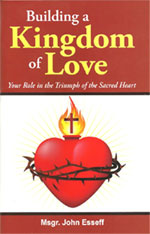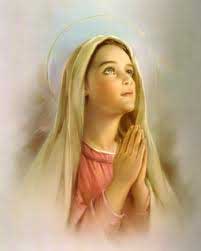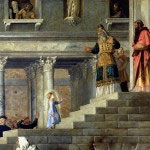Show 4 ” Building a Kingdom of Love” – The Power of Baptism: a story of Bl. Mother Teresa, a princess, and a baby named Cecilia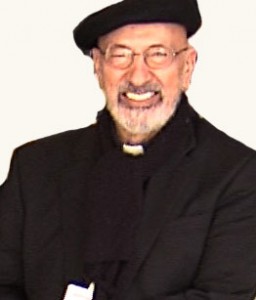
Msgr. Esseff reflects on the power of Christ given to us in our baptism. Â He tells two poignant stories about Bl. Mother Teresa, a princess and a baby named Cecilia. Â Do we appreciate the gift? Msgr. Esseff also addresses the fears and concerns grandparents have when their children fail to have their own 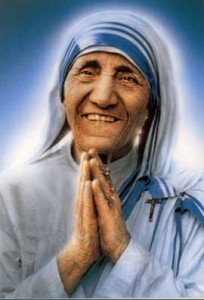 children baptized. Â Be not afraid…call on the Blessed Virgin Mary and the Holy Rosary.
children baptized. Â Be not afraid…call on the Blessed Virgin Mary and the Holy Rosary.
[powerpress]
Msgr. John A. Esseff is a Roman Catholic priest in the Diocese of Scranton. He was ordained on May 30th 1953, by the late Bishop William J. Hafey, D.D. at St. Peter’s Cathedral in Scranton, PA. Msgr. Esseff served a retreat director and confessor to Blessed Mother Teresa.   He continues to offer direction and retreats for the sisters of the missionaries of charity around the world. Msgr. Esseff encountered St.  Padre Pio,  who would become a spiritual father to him. He has lived in areas around the world,  serving  in the Pontifical missions, a Catholic organization established by Bl. Pope John Paul II to bring the Good News to the world especially to the poor. Msgr. Esseff assisted the founders of the Institute for Priestly Formation and continues to serve as a spiritual director for the Institute. He continues to  serve as a retreat leader and director to bishops, priests and sisters and seminarians and other religious leaders around the world. Â
To obtain a copy of Msgr. Esseff’s book byvisiting here
Be sure to visit Msgr. Esseff’s website “Building a Kingdom of  Love”
Tags: baptism, blessed mother teresa of calcutta, catholic, catholic podcast, catholic prayer, cathollc spirituality, Good News, John A. Esseff, John Esseff, mother teresa, retreat, Roman Catholic
This entry was posted on Tuesday, May 8th, 2012 at 9:09 pm
You can follow any responses to this entry through the RSS 2.0 feed.
I love this feast day of the Blessed Virgin Mary!!!
The Presentation of the Blessed Virgin Mary (as it is known in the West), or The Entry of the Most Holy Theotokos into the Temple (its name in the East), is a liturgical feast celebrated by the Roman Catholic and Orthodox Churches.
wiki - The feast is associated with an event recounted not in the New Testament, but in the apocryphal
Infancy Narrative of James. According to that text, Mary’s parents, Joachim and Anne, who had been childless, received a heavenly message that they would bear a child. In thanksgiving for the gift of their daughter, they brought her, when still a child, to the Temple in Jerusalem to consecrate her to God. Mary remained in the Temple until puberty, at which point she was assigned to Joseph as guardian. Later versions of the story (such as the Gospel of Pseudo-Matthew and the Gospel of the Nativity of Mary) tell us that Mary was taken to the Temple at around the age of three in fulfillment of a vow.
The feast originated as a result of the dedication of the Basilica of Saint Mary the New, built in the year 543 by the Byzantines under Emperor Justinian I near the site of the ruined Temple in Jerusalem. Although this
basilica was destroyed by the Sassanid Persians under Khosrau II after the Siege of Jerusalem (614), the feast continued to be celebrated throughout the East. The feast was celebrated in the monasteries of Southern Italy by the ninth century and was later introduced into the Papal Chapel in Avignon in the year 1372 by a decree of Pope Gregory XI. Â It was included in the Roman Missal in 1472. But, as the fact of the “Presentation of the Blessed Virgin Mary” is only a pious belief, but not a defined matter of faith, it was suppressed by Pope Pius V in 1568. Â As a result, it did not appear in the Tridentine Calendar. Pope Sixtus V reintroduced it into the Roman Calendar in 1585. Pope Clement VIII made this feast a Greater Double in 1597. The
feast also continued as a memorial in the Roman Calendar of 1969.
Entry of the Most Holy Theotokos into the Temple (Russian icon, 16th century).The Eastern Orthodox Church celebrates it as one of its twelve Great Feasts on November 21 (for those churches which follow the Julian Calendar, November 21 falls on December 4 of the modern Gregorian Calendar). The first documented celebration of the feast in any calendar is the mention of the Εἴσοδος τῆς Παναγίας Θεοτόκου (Entry of the All-Holy Theotokos – i.e. into the Temple) in the 11th-century Menology of the Eastern Roman (also known as Byzantine) emperor Basil II. In the Orthodox Church the feast always falls during the Nativity Fast, and on the day of the feast the fasting rules are lessened somewhat so that fish, wine and oil may be eaten.
For the Roman Catholic Church, on the day of the Presentation of the Blessed Virgin Mary, “we celebrate that dedication of herself which Mary made to God from her very childhood under the inspiration of the Holy Spirit who filled her with grace at her Immaculate Conception.”
November 21 is also a “Pro Orantibus” Day, a day of prayer for cloistered religious “totally dedicated to God in prayer, silence and concealment.”
The Presentation in art
Western depictions usually focused on the lone figure of the young Mary climbing the steep steps of the Temple, having left her parents at the bottom, and climbing towards the Chief Priest and other Temple figures at the top of the steps. The Presentation was one of the usual scenes in larger cycles of the Life of the Virgin, although it was not usually one of the scenes shown in a Book of hours. – wiki
Collect: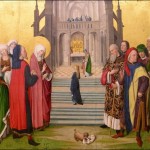
Eternal Father,
we honor the holiness and glory of the Virgin Mary.
May her prayers bring us
the fullness of your life and love.
We ask this through our Lord Jesus Christ, your Son, who
lives and reigns with You and the Holy Spirit,
one God, for ever and ever. Amen.
First Reading: Zechariah 2:14-17 (2:10-13 RSV)
Sing and rejoice, O daughter of Zion; for lo, I come and I will dwell in the midst of you, says the Lord. And many nations shall join themselves to the Lord in that day, and shall be My people; and I will dwell in the midst of you, and you shall know that the Lord of hosts has sent Me to you. And the Lord will inherit Judah as His portion in the holy land, and will again choose Jerusalem.”
Be silent, all flesh, before the Lord; for He has roused Himself from His holy dwelling.
Gospel Reading: Matthew 12:46-50
While He was still speaking to the people, behold, His mother and His brethren stood outside, asking to speak to Him. But He replied to the man who told Him, “Who is My mother, and who are My brethren?” And stretching out His hand toward His disciples, He said, “Here are My mother and My brethren! For whoever does the will of My Father in heaven is My brother, and sister, and mother.”
Tags: blessed virgin mary, catholic, catholic podcast, catholic prayer, cathollc spirituality, holy spirit, Holy Theotokos, prayer, presentation of the blessed virgin mary, Roman Catholic, silence, The Presentation of the Blessed Virgin Mary
This entry was posted on Monday, November 21st, 2011 at 12:07 am
You can follow any responses to this entry through the RSS 2.0 feed.
Fr. Robert Barron’s “Catholicism: a journey to the heart of the faith” is wonderful.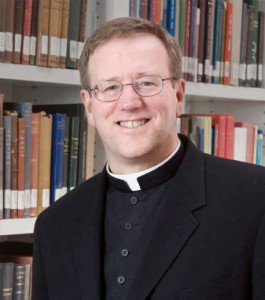 Â AÂ beautiful exploration of the Roman Catholic faith and it’s gift to the world and to culture.
 A beautiful exploration of the Roman Catholic faith and it’s gift to the world and to culture.
[powerpress]
From randomhouse.com
What is the Catholicism? A 2,000 living tradition? A worldview? A way of life? A relationship? A mystery? In Catholicism Father Robert Barron examines all these questions and more, seeking to capture the body, heart and mind of the Catholic faith.
Starting from the essential foundation of Jesus Christ’s incarnation, life, and teaching, Father Barron moves through the defining elements of Catholicism – from sacraments, worship, and prayer, to Mary, the Apostles, and Saints, to grace, salvation, heaven, and hell – using his distinct and dynamic grasp of art, literature, architecture, personal stories, Scripture, theology, philosophy, and history to present the Church to the world.
Paired with his documentary film series of the same title, Catholicism is an intimate journey, capturing “The Catholic Thing†in all its depth and beauty. Eclectic, unique, and inspiring, Father Barron brings the faith to life for a new generation, in a style that is both faithful to timeless truths, while simultaneously speaking in the language of contemporary life.
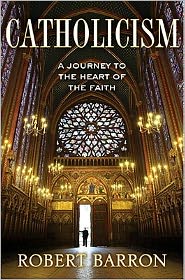 Â Find out more about the book Fr. Barron’s website : Â wordonfire.org
 Find out more about the book Fr. Barron’s website :  wordonfire.org
Tags: catholic, catholic apologetics, catholic apologist, catholic podcast, catholic prayer, cathollc spirituality, faith, fr. robert barron, heart, image books, random house, Robert Barron Catholicism, Roman Catholic, word on fire
This entry was posted on Monday, August 8th, 2011 at 7:52 am
You can follow any responses to this entry through the RSS 2.0 feed.

